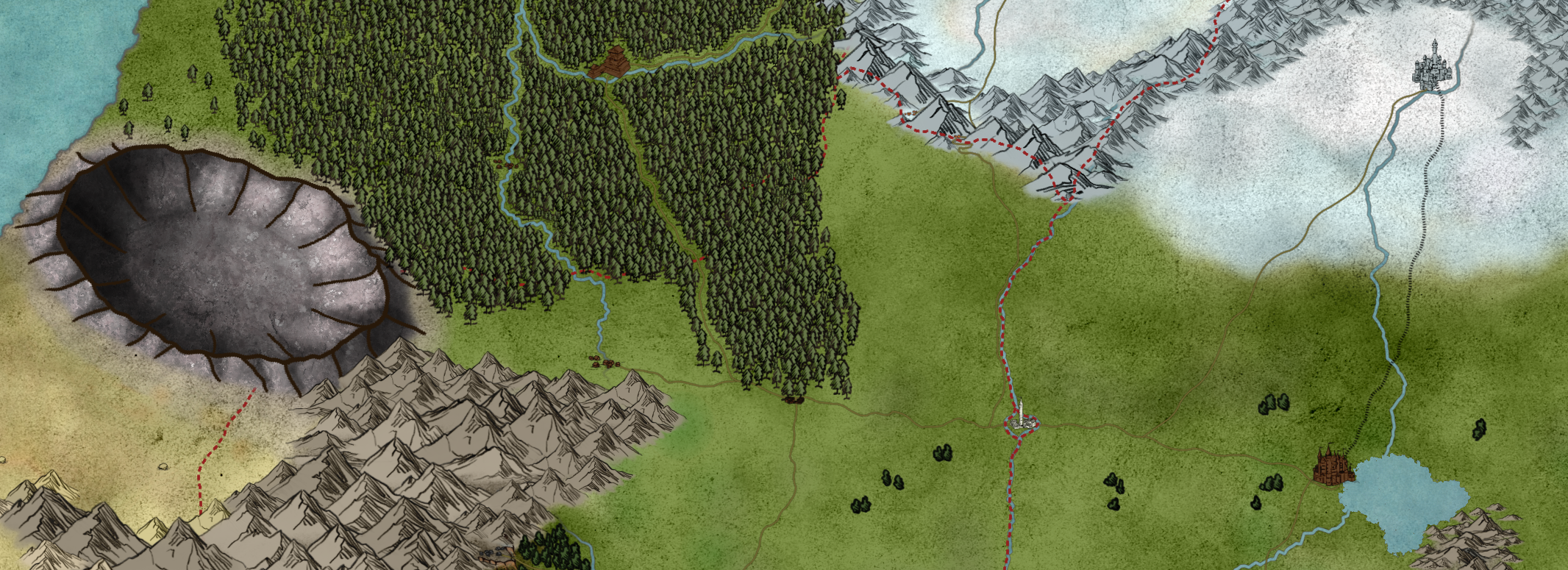Beardox
Basic Information
Anatomy
Beardoxen are quadripedal large herbivores with a thick layer of insulating fur. They have massive horns, that starts as a protection of the whole head, and forms into pointed ends at the sides. Both male and female beardoxen have these horns.
Genetics and Reproduction
A female beardox will reach fertility at around 4 years old. The period where they go into heat is usually during the months Sun's Flame and Sun's Warmth, when there's plenty of food and the least amount of snow covering the ground. The males will fight over the females, and each male might "win" around 5 cows. The fights start with the males stomping around and roaring, and if one of them don't back off, they will run at each other. These fights are brutal, and it happens quite often that one of the males will get hurt, occasionally lethally.
The gestation period is 10 months on average, and only one calf is born per mother. Calves are usually born in the period between the latter haf of the month Field Seed to the end of the month of Emerald Leaves. Since the calf is still nursing under the next heat, the female beardox doesn't go into heat the same year as she calves. During pregnancy, and while the calf is nursing, the mother beardox is extra protective of its herd, and takes over the role as the most aggressive.
The calf lives on its mother's milk for about a year before it's weaned, slowly getting used to eating other food during its first year. Then it only eats the same things as the grown animals.
Ecology and Habitats
The beardox needs colder climates to not boil under its thick insulating fur. This means that the Inmali climate is perfect for the creature.
Only the larger predators can take down a grown beardox, however, so the only real predators they have to fear are larger wolves and occasionally bears.
If the herd is attacked, the healthy adult beardoxen create a shield of bodies and horns between the attacker and the calves and sick animals. This wall is intimidating and solid, and only large pack hunters like winter wolves has any chance of taking on a herd of beardox in defensive mode, and even then, at great personal risk. If the beardox feels it's more beneficial to charge, it will. Charging is the main defense when a stray beardox is found alone in the wild. Being rushed by a beardox is usually lethal for all humanoid beings.
Dietary Needs and Habits
The beardox is a herbivore, and not really a picky one. This is most likely because of the scarcity of things that will grow in the mountains and tundras of Inmalenor. The diet consists most of lichen, grass and the small trees that tries to thrive. The less snow it's covered by, the better, but the beardox can dig through a surprisingly thick layer of snow if it thinks it's food underneath.
Biological Cycle
In summer, a beardox will try to eat enough to develop a thick layer of fat as a nutritional storage, since food is extremely scarce during winter. This, together with the shredding of the winter layer of its fur in spring, makes the beardox look drastically thinner in spring and early summer than in the end of autumn.
Additional Information
Domestication
Some of the Inmali tribes have domesticated a few beardoxen for breeding, so they have access to meat, wool and leather. The beardox is an aggressive race, however, so most tribes are content hunting the beasts instead of having them too close to their camps.
Uses, Products & Exploitation
The woolen inner fur of a beardox is good for making yarn to make warm clothes, either by weaving or needling the yarn together, or to felt into fabric.
The skins are used either with the fur for insulation, or without the fur as leather.
A beardox has a lot of mass, and the meat is an important staple food of many of the tribes.
Geographic Origin and Distribution
Average Intelligence
Beardoxen aren't the brightest animals to ever walk the lands, but it has strong instincts, and a need to protect the rest of its herd.
Lifespan
15 - 25 years
Average Height
1.2 - 1.7 m
Average Weight
280 - 450 kg
Average Length
2 - 2.5 m
Related Materials




Comments